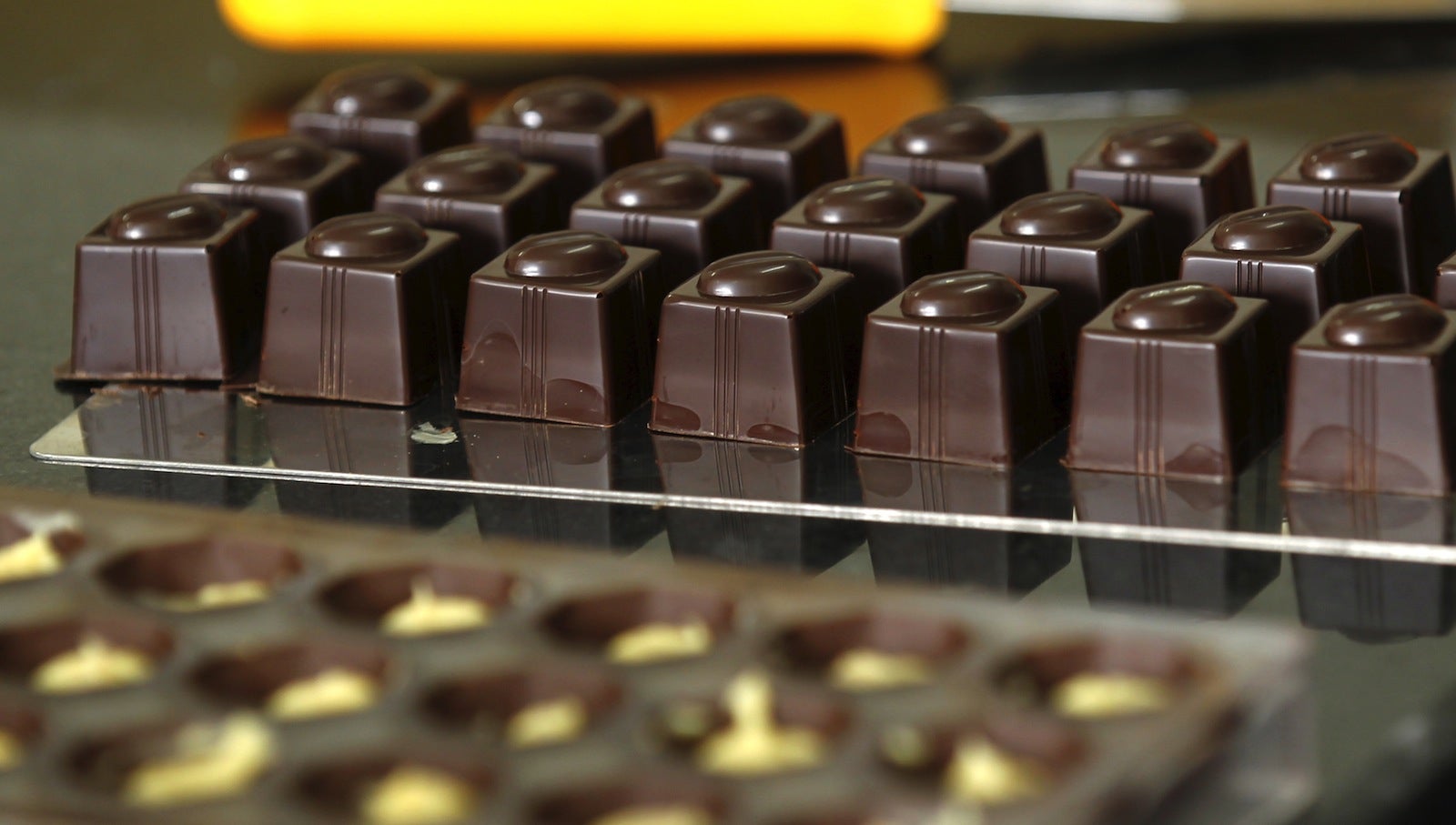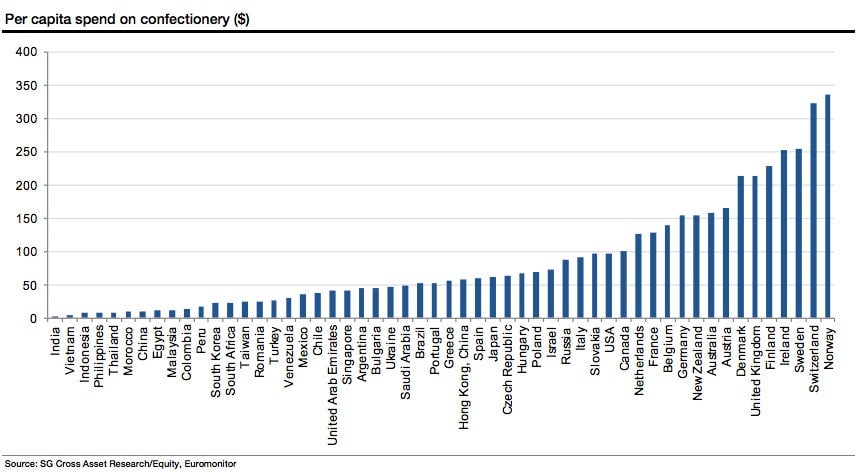The delicious truth: India is one of the fastest growing chocolate markets in the world
India is working up a voracious appetite for chocolates.


India is working up a voracious appetite for chocolates.
A delectable combination of rising disposable incomes, changing lifestyles and a young population’s growing penchant for indulgence has transformed India into one of the world’s fastest growing chocolate markets.
A July report from French investment bank Societe Generale predicts that in the next five years, global confectioners will see the highest growth in four markets: India, Mexico, China and Brazil.
But it’s not just affluent Indians who are craving for chocolates, although they still comprise nearly 80% of country’s chocolate sales, according to Technopak, a retail consultancy. Lured by smaller, more affordable offerings, the rural hinterland and and tier 2 and 3 cities—still dominated by traditional Indian sweets—are developing quite a sweet tooth.
Overall, India’s per-capita spending on confectionery is tiny—and that means there’s plenty of room for growth.

Product play
In as early as 1998, India’s largest chocolate maker, Mondelēz—earlier called Cadbury—introduced chocolate packets that cost as low as Rs5. This was mainly to persuade non-users to try the products and to penetrate into rural areas.
At the other end of the market, Mondelēz is also expanding its range of premium chocolates for an urban clientele with a more international palette.
According to Prashant Peres, director, marketing (chocolates) at Mondelez India, to keep up with the growing demand in the premium segment, the company has introduced new products in recent months.
“With product and packaging innovations like our various home treat packs, we are also focusing on creating new consumption occasions in the mainstream segment,” Peres told Quartz in an email.
Alongside, the traditional notion that chocolates are meant only for children is also changing.
“Previously chocolates were predominantly seen as a confectionary product for children, which also limited their consumption. However, market leader Cadbury’s (Mondelez) has focussed on growing chocolate consumption by adults, for gifting as well as a celebratory consumption instead of traditional sweets,” said Devangshu Dutta, chief executive of Third Eyesight, a retail consultancy.
This has made it possible for other companies to bring niche products to the Indian market including premium chocolates (such as those by Ferrero Rocher) and imported products, Dutta told Quartz in an email.
Italy’s Ferrero Spa—makers of the popular Kinder Joy chocolates, Nutella chocolate spread, Ferrero Rocher chocolates and Tic Tac mints—has seen its revenue shoot up in India. In 2014, the company’s sales in India rose 76% to Rs1,014 crore ($160 million) and it posted its first-ever profit of Rs12 lakh ($18,931).
Such numbers have enticed others to join India’s chocolate craze. In March this year, Mars International India, a subsidiary of the American Mars Inc, announced that it will invest Rs1,005 crore ($159 million) in a new factory in Pune in Maharashtra. The plant will make brands like Snickers and Galaxy.
Factors such as rising cocoa prices and lack of supply-chain infrastructure in India have not exactly dampened the enthusiasm of chocolate makers.
“The chocolate industry in India is growing at nearly 20% every year,” MV Natarajan, general manager, Mars International India, said in a statement, ”and we see this as a huge opportunity to expand our chocolate portfolio in the country in the coming years.”
For India’s chocolate makers and lovers alike, the fun has just begun.